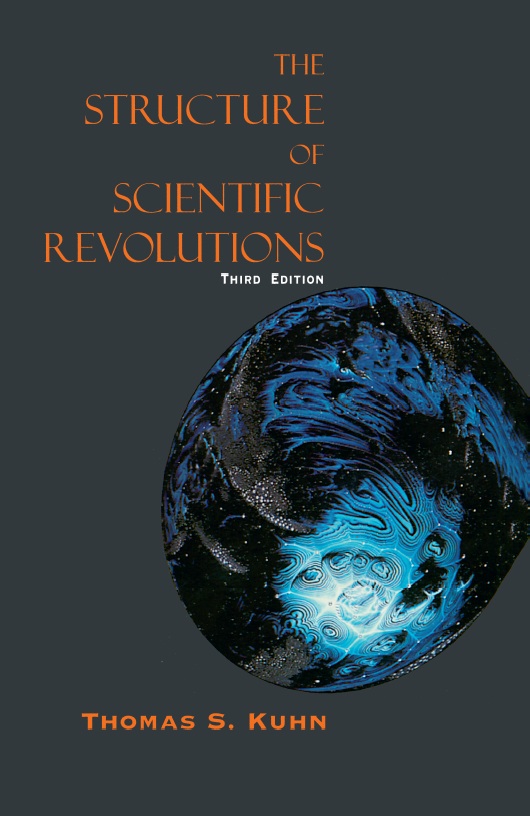The Structure of Scientific Revolutions
University of Chicago Press, 1996
Cloth: 978-0-226-45807-6 | Paper: 978-0-226-45808-3 | Electronic: 978-0-226-45810-6
DOI: 10.7208/chicago/9780226458106.001.0001
Cloth: 978-0-226-45807-6 | Paper: 978-0-226-45808-3 | Electronic: 978-0-226-45810-6
DOI: 10.7208/chicago/9780226458106.001.0001
AVAILABLE FROM
This title is no longer available from this publisher at this time. To let the publisher know you are interested in the title, please email bv-help@uchicago.edu.
ABOUT THIS BOOKAUTHOR BIOGRAPHYTABLE OF CONTENTS
ABOUT THIS BOOK
"A landmark in intellectual history which has attracted attention far beyond its own immediate field. . . . It is written with a combination of depth and clarity that make it an almost unbroken series of aphorisms. . . . Kuhn does not permit truth to be a criterion of scientific theories, he would presumably not claim his own theory to be true. But if causing a revolution is the hallmark of a superior paradigm, [this book] has been a resounding success." —Nicholas Wade, Science
"Perhaps the best explanation of [the] process of discovery." —William Erwin Thompson, New York Times Book Review
"Occasionally there emerges a book which has an influence far beyond its originally intended audience. . . . Thomas Kuhn's The Structure of Scientific Revolutions . . . has clearly emerged as just such a work." —Ron Johnston, Times Higher Education Supplement
"Among the most influential academic books in this century." —Choice
One of "The Hundred Most Influential Books Since the Second World War," Times Literary Supplement
AUTHOR BIOGRAPHY
Thomas S. Kuhn was the Laurence Rockefeller Professor Emeritus of linguistics and philosophy at the Massachusetts Institute of Technology. His books include The Essential Tension; Black-Body Theory and the Quantum Discontinuity, 1894-1912; and The Copernican Revolution.
TABLE OF CONTENTS
Preface
I. Introduction: A Role for History
II. The Route to Normal Science
III. The Nature of Normal Science
IV. Normal Science as Puzzle-solving
V. The Priority of Paradigms
VI. Anomaly and the Emergence of Scientific Discoveries
VII. Crisis and the Emergence of Scientific Theories
VIII. The Response to Crisis
IX. The Nature and Necessity of Scientific Revolutions
X. Revolutions as Changes of World View
XI. The Invisibility of Revolutions
XII. The Resolutions of Revolutions
XIII. Progress through Revolutions
Postscript-1969
Index
